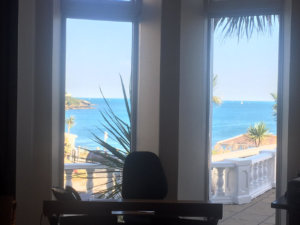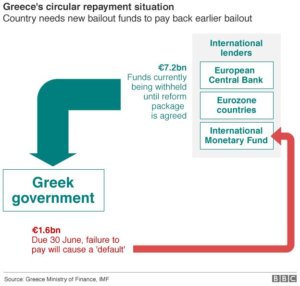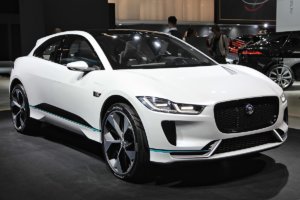“Mind The Gap!” The life and times of a man on the move. Episode 3
Cornwall is London-On-Sea, Amsterdam airport burgers up a good opportunity, a buffoon with a balloon, the wastefulness of arrogance, poking your best friend in the eye and are friends electric?

In this weekly series, I look back on what stood out, what was bemusing, amusing and interesting during my weekly travels, interesting findings within the FX industry and interaction with an ever-shrinking big wide world. This is purely observational and for your enjoyment.
Monday: The “Citi” of Cornwall
Cornwall, is, without doubt, the most spectacular region of the provincial United Kingdom. There can be no debate on this. There are those who would show affinity to the Lake District due to the endless, soaking wet weekends spent in ill-equipped tents precariously pitched on the side of a bleak mountain as the westerly gail and horizontal rain piles in from the Irish sea and dumps itself onto the Primus stoves and walking equipment of visitors, who, on the return journey southward on the M6 vow to return next ‘summer’ for further punishment.

There are those who favor the Peak District, which, with its outstanding natural beauty remaining a myth to those who have never seen it due to the copious covering of snow and a few impromptu visits to the Northern General Hospital in Sheffield after the A57 Snake Pass claims yet another casualty.
Then there is Dorset. Miles of green fields, peppered with accommodation in the form of slightly different green fields which contain potable water facilities and 12 volt electricity points for those who wish to take time off work, and leave their comfortable home in London with its cultural facilities and sophisticated lifestyle so that they can spend hours on the M3 doing 50 miles per hour (if lucky!) whilst dragging an unstable, beige fiberglass box behind their late 1990s Volvo V70 to spend two weeks sheltering from the rain inside said beige fiberglass box with the occasional trip outside to trudge through the mud emptying one’s chemical lavatory and the rest of the time defecating in a bucket.
Whilst these three examples of well tried and tested methods of experiencing the Britain that is not London must have a certain je ne sais quoi, hence their longstanding popularity, there is no match for Cornwall.

Founded on piracy, contraband, tin mining, fishing and agriculture, Cornwall’s magnificent coastal towns and fishing ports are the gem of the United Kingdom. Padstow, Falmouth, Truro and Rock play host to prep school summer camps and are prime destinations for London’s chattering classes who wish to avoid the vulgarity of Majorca and commute by Robinson R22 to Battersea heliport twice weekly to ensure that the i’s are dotted and t’s are crossed in the board meetings.
As a result, Cornwall is sophisticated as well as picturesque. It is a cultural journey rather than a cultural void. There are fine restaurants, a theater culture, many private venues and a standard of local produce that has been honed from high expectations.
Far and remote from, well, pretty much everywhere, Cornwall is relatively expensive in terms of real estate and entertainment, due to the influx of city dwellers. Not city dwellers wishing to rebel against their pinstripe suited urban origins and go all Hugh Fearnley-Whittingstall by living off the land, growing a beard with twigs in it and rearing lambs in the bath, but by city dwellers who continue to wear their Crew shirts and conduct M&A deals from their 84 foot Azimut in Falmouth harbor. City dwellers who remain city dwellers but do so by the sea.
Why, in that case, are there no FinTech companies or service providers to the electronic trading sector in Cornwall? The heart of the entire global institutional FX and electronic trading business is restricted to Fenchurch Street, Cornhill, Lower Thames Street and all the areas within immediate walking distance, and the banks that provide the Tier 1 liquidity just down the road on the banks of Millwall Dock.
In some of the more prestigious streets in central London, rent averages £85 to £100 per square foot, making a 4,000 square foot office (about average for a medium sized FX firm) cost anything upwards of £340,000 per month.
When considering that the average deposit size from retail customers, according to research by Citigroup, was $6,600 across the world’s 4 million retail FX traders in 2015.
Yes, London is one of the very finest cities on earth, however the FCA’s regulatory status reaches UK-wide, and the electronic nature of our business and we are after all an electronically distributed sector in entirety.

No doubt the sailing clubs of the prep schools in Cornwall would welcome the kin of the Tier 1 bankers, and the office space opportunities plus corporate entertainment facilities would be world class. There is even an international airport in Newquay which flies to Toronto Pearson and Newark, or via Heathrow or a European hub to the Far East.
Leaving Falmouth on Monday this week got me thinking. There is enough in the way of investment and purchasing power, infrastructure (which is first class) and relative proximity to London and the rest of the world to justify it. I do know of a senior Citi executive from New York who resides in Cornwall and makes a monthly trip from Newquay airport to New York and twice weekly journeys to Citi’s Canary Wharf office on the train, and let’s face it, there are worse views than through the window of an Intercity train’s first class carriage which has internet, a table, a steward facility in which firms can argue about order flow between each other whilst the tranquil British countryside whizzes by at 125mph.
Tuesday: Schiphol burgers it up badly.
Whether I am alone in this view or if it is a common finding is very hard to measure, however I have always taken a Victor Meldrew-esque view on European airports. Any long period of time in the departure lounges of airports in Madrid, Rome, Warsaw or Brussels often has me wondering how facilities that resemble penitentiary centers are able to charge for a sandwich with turned-up corners containing an indeterminable matter which is available in either grey or brown, when correctional facilities do not charge their inmates for similar surly service, bland food and dismal interior conditions.
The exception to this is Schiphol airport in Amsterdam, which has been not only subject to a vast renovation and modernization project over recent years but is also a very important entry and exit point in Europe due to its positioning as a hub for international business passengers from all over the world.
There is no allusion to the usual channel-crossing spartan fittings, or post-communist ration-style fayre served with the friendliness of a wayward tomcat. Instead, it has the best facilities in Europe but apart from a mildly acceptable sushi bar, poor food even though there are endless ‘trendy’ bars or overtly emphasized local ones.

Yes, the presentation is there. Yes the modernity is there and the international flavor more reminiscent of Los Angeles or Chicago than the ‘old world’.
After a genuinely long walk around the array of varied options on Tuesday, I found that the fashionable nature is unfortunately skin deep. A disgusting burger ruined my much needed fish diet. Fries with mayonnaise may be a stereotype joke, but at 10pm during a transfer, it is not that amusing.
Most European airports have the charm of a public lavatory on the A61 but Schiphol offers a glimmer of hope due to its international aura. And by international I mean genuinely busy with people from all over the world, with proper expectations, not mainland Europeans who have long accepted the brutalization of sitting for hours in Madrid with nothing but tumbleweed blowing across the terracotta floor and only a vending machine full of malfunctioning power converters for company, or Milan Malpensa where the entertainment comes in the form of taking a wild guess as to where Alitalia has sent your luggage this time. Kathmandu or Cameroon? Your guess.
The good quality facilities in Amsterdam come in the form of very neat touches like a “Yotel” Hotel that is only available inside the transfer lounge so travelers with long waits can rest until their connection, fabulous skin care and physio facilities for those who would not otherwise have time unless captured by transfers and have spent too long couped up in the economy class seats on an Airbus A319.
Note to Schiphol’s management – You have come so far, let’s now see genuine international and good quality fayre!
Wednesday: The balloon buffoon.
Infantile behavior is not something that is often witnessed by established leaders of major business centers such as London, Hong Kong and New York.
All three cities have risen to the absolute top of global business and cultural society and are focal points for every industry sector that exists in every corner of the earth as a result of their own dynamicism and the drive toward those centers of the world’s finest and most talented leaders who have built everything from finance to heavy industry into a form that represents long established publicly listed companies to ingenious startups that have been steered to fruition by ultra-knowledgeable venture capitalists and foresight.
Internships at Goldman Sachs or PriceWaterhouseCoopers lead to corporate acumen at a young age, and leadership, behavior, manners and etiquette mark out the world’s global cities as the last word in sophistication and modernity.
This is why such businesses have the most prestigious Forbes-listed companies in the world. It is why London or New York based 30-something senior management are globally marketable and are fighting off mid-six figure board appointment offers all day.

It is why plate glass sophistication exists in every street, with immaculately dressed and mild mannered people in control nonchalantly discuss the takeover of FTSE-listed blue chips over a halibut thermidor as though it was an every day frivolity.
On Wednesday this week, the display of ludicrous and offensive (or perhaps embarrassing) childishness by London’s Mayor Sadiq Khan, a young and inexperienced socialist, was completely out of keeping with even a backwater town in a middle-income nation, let alone one of the world’s most important business and social centers.
By allowing a large, cartoon-esque balloon in the shape of an unflattering caricature of United States President Donald Trump to levitate over the capital, Mayor Khan not only showed that he is not fit for a geography class in a mediocre junior high school, let alone public office by embarrassing an entire city of hard working and sensible global business people who represent the giants of industry in every nation on earth (over 400 languages are spoken in London), but also by making a conscious attempt to alienate Britain’s unfaltering and undemanding evergreen friend.
Mayor Khan’s absurd stunt sends a signal to a nation of alignment with the UK that they are not to be respected in business. This message is clear because the appalling caricature was launched during a week in which President Trump had been visiting the UK with a view to working out a very clear path of which the United States – the UK’s most loyal ally – to do unrestricted business with Britain.
Mayor Khan’s response was to mock the President of the world’s largest free market economy, the world’s kindest and most philanthropic people who have never retaliated once when belittled by a British socialist for wanting to extend a genuine hand to the closest ally since establishment of the United States in 1776.
Losing world war two to a violent and homicidal dictatorship? No problem, we will send our 18 year old boys to risk their lives to save you as well as a unlimited fund that you never need to pay back.
Need more industrial base? No problem, Microsoft, Ford Motor Company, Intel, all of the big pharma, Apple Corporation, Coca Cola, and several other top global firms will invest in the UK and promise to generate employment with no reciprocal requirement.

Want to visit America? Welcome! Want to visit Germany – who Mr Khan and his party would rather side with – that’s fine if you can stand the coercive anti-British aura that hangs in the air and the continual requirement for ECB funding to pay off feckless waste and lack of industry across the mainland.
Fancy a protest or a war (financial or military) against Britain? Europe’s your place.
President Trump responded to this absurdity by stating that Prime Minister May will blow Britain’s chances of a good quality and aligned business and trade agreement with the United States (and for that read the free market world) if it continues to sidle up to Europe’s political bullies.
He is right. The financial and FinTech sector in London produces 16% of all of the European Union’s tax receipts by employing just 0.0009% of the workforce of the 28 nations in the Union.
That speaks for itself. Britain is aligned with Hong Kong, North America, Australia, South Africa, Asia, mainland China, and has well established subsidiaries of British firms operating in major roles in those nations. HSBC (originally a British/Chinese venture) is one of the official issuers of currency in Hong Kong, for example.
Culturally, Britain’s business environment has everything in common with the US and nothing in common with Europe. British people drive their Range Rovers to the mall and expect massive choices in everything they do for leisure, business and consumption. Modernity is everywhere in Britain. British people do not, by enlarge, ride a rusty 1970s bicycle with a basket on the front to a dilapidated local store for a baguette and limited range of local cheese.
British expectations are high and the whole nation is efficient and well run by people who are calm and civil. Even a trip to Waitrose demonstrates that.
Thankfully, because of the high level of education and professionalism in the UK, very few people will have paid heed to Mr Khan’s absurd attempt to alienate Britain’s best friend, because British business by its very nature runs itself unlike European affairs which are run by dictators whilst the population have little social mobility. If this had been the Mayor of Paris, thousands of citizens would perhaps of taken to the streets to wave similar effigies but the British kept calm and carried on, and rightly so.
Thursday: Consultancy? What is that?
A large number of companies which value the purpose of operating efficiently have for many years employed the services of outsourced professional services consultancies.
During the 1990s and 2000s, when I worked on app deployment projects for trading infrastructure within major banks on the systems development side of the bank and its hardware and software providers, companies such as Accenture, Steria, Capita and Fujitsu-Siemens had already grown their outsourcing service to include Solutions Architects and infrastructure planners, which, following the divestment from on site hardware dependency in enterprise environments led by companies such as VMWare, often meant that large financial institutions could outsource entire aspects of their operations to consultancies without having to have on-site consultants from those firms.
Instead, these projects were developed, designed, deployed and supported from the offices of the management consultancy firms with just a few senior architects on customer site at any one time, usually on a daily contract basis.
This has proven to be a very efficient model indeed. Yes, it costs $3000 a week to hire a consultant on a self-employed basis, but the massive operational cost of running everything on site is not only a contributor to the dinosaur effect, but creates inflexibility and inability to make quick changes to keep pace with change.

The surprising point here is that many firms in the electronic trading business do not see the value of such a structure, which is in my opinion holding some of them back. On Thursday I had this conversation with two senior FX industry executives during a meeting, in that when looking to expand a business to gain a different market share, or to move into a new sector, consultancy is required because the new area may bear no similarities to the company’s existing core business.
An example that struck me this week is that of a well known firm with a large retail client base and a very good reputation, several regulatory licenses and a long period of time in establishment which wants to go down the institutional route as a separate division.
This is an area that many firms explore, however only one that I can think of has ever managed to expand on its retail roots to become a genuine prime of prime, that being Saxo Bank. There are no read-across firms that began as retail firms, and have successfully maintained a genuine and comprehensive prime of prime service. Most of the world’s very few prime of prime brokerages began as prime of primes, their founders hailing from leadership positions at Tier 1 banks, or technology conglomerates.
Retail, therefore, is retail, and institutional is institutional. Most firms that maintain that they combine both are often really operating a retail system and then selling a retail price feed to brokerages, which ultimately is not a genuine method. This Thursday’s light conversation led me to look back at the history of the retail FX sector and I can deduce that the common approach is to realize that some outside assistance is needed, but no actual commitment is ever made.
This is due to the lead sales/revenue share approach that most retail firms have become not only accustomed to but absolutely fixated on. No firm will give a budget to a consultancy firm who will then build and source infrastructure for operating a margin prime of prime business, including connectivity to Tier 1 liquidity relationships right down to an order management system for brokers.
No firm will give a monthly development and go-to-market budget. Most of the time, I have seen firms casually ask people with connections to “get us into that market” with no commitment, usually on a revenue share basis. This is not the way to develop and build institutional business.

Often, in the case of some of the larger retail firms, a relationship may exist between said firm and an individual who has a prime brokerage relationship with a Tier 1 bank but for a different business type, and who has enough leverage to convince them to use that relationship, hence any consultancy gets vetoed. It is then not possible for the consultant to explain that give up business on an institution to institution basis, and the underlying prime relationship, is very different to margin business and the bank may well reject it despite a longstanding give up relationship.
By that time, due to the non commital approach to consultants shown by many retail firms, the whole thing falls flat. A great shame, as many have good potential if they employ the approach to business which is utilized by established firms in other parts of the financial sector.
Friday: Do we have electric dreams, or is oil really slick?
In 1989, General Motors began to demonstrate a very bold diversion from its corporate standing as, at the time, the largest company in the world.
At a time during which the US government and Ralph Nader’s favorite department, the Environmental Protection Agency (EPA) had become utterly obsessed with motor vehicle fuel consumption and emissions, yet was at odds with its own central government and other global governments in that oil consumption and the tax levied on it had for many years become an absolute key component of the revenue stream for all economies.
The vice-like grip that the OPEC nations had managed to gain on the West had become irreversible and despite many oil crises throughout the 1970s and the environmental factors of the 1980s, oil remained.
General Motors bold step in 1989 was to pioneer the EV-1 electric car, which, as I said here two weeks ago, was ridiculed as a ‘hairdryer on wheels’ that no self-respecting motorist would lower themselves toward admitting to owning and the clever marketing of internal combustion as a hairy-chested form of motive power for ‘real’ enthusiasts had led to anything without spark plugs and at least 6 cylinders being a target for derision.
A Ford Mustang or Chevrolet Camaro was the automotive equivalent of a French Dip with dijon mustard and extra horseradish sauce, a mid-sized Buick or Cadillac sedan was gentlemanly and exuded class, whereas an electric car was automotive tofu or mung beans.

Nowadays, however, it is no longer amusing and electricity is here to stay. On Friday, Jaguar Cars Ltd, the firm once led from its Coventry base by motor racing enthusiast and iconic performance car designer William Lyons whose own caption to describe the sleek and elegant XJ range of the 1960s onwards was “Grace, Pace, Space”, launched its first fully electric car, the i-Pace onto the Israeli market.
XJ (standing for eXperimental Jaguar) followed by the number of cylinders has represented Jaguar’s enviable nomenclature from 1968 to this day. In the 1980s, owning a Westminster Blue XJ12, that being the model with the British Aerospace-developed alloy V12 engine, was a symbol of polite success. An iron fist in a velvet glove. Exquisite class and style perfected…. along with 10 miles per gallon and two fuel tanks.
Friday’s new release which arrived on the streets of Tel Aviv has the lower case ‘i’ in its title, a naming convention more often associated with electronic devices and smartphones than cars.
The i-Pace is no slouch. According to Jaguar Cars, it will reach 62 miles per hour (100 km/h) in 4.7 seconds, which is remarkable for a heavy luxury car with a massive battery pack (electric cars are far heavier than internal combustion engined cars due to the battery weight).
The question is, judging from the array of willing buyers who range from trendy post-modern technology enthusiasts who are too young to remember the halcyon days of 350 cubic inch muscle cars and luxury V12 sedans of the 70s and 80s and are proud to be part of the ‘Spotify Generation’, people with a social conscience, and in this country (Israel), those with political motivations that assume (quite wrongly unfortunately) that by not using conventional gasoline, the wars will stop due to the only revenue stream in the Arabian peninsula drying up. 3 million people using an electric car out of 6 billion worldwide citizens will not bring immediate world peace, even though I do have some hope that one day technology and advancement will do its bit.
The reality here is that crude oil’s value as a commodity may well eventually be affected. There is no way oil will run out. The environmentalists with beads in their hair in the 1980s who often appeared on left-leaning television documentaries stating with an alarmed look of conviction on their countenances that before 2000, oil will run out and we are all going to be sorry for our appalling appetite for it were wrong, and even as a teenager I could see that a continually replenishing resource of such magnitude could not simply be completely extracted from the world within just a few years.

What may well happen is that there could be less demand for the refinement of oil into petroleum products for the propulsion of vehicles in the immediate future – Jaguar’s i-Pace and the Tesla range will take a very long time to lead the way for the rest of the motor industry to go electric – however there are a lot of hybrid cars now that use far less fuel than their 1990s equivalent and even my full-size SUV does a remarkable 25mpg from a conventional 6 cylinder engine which would have used double the amount of fuel 20 years ago.
This lowers the demand via the advancement of technology however it may well be that the procurement departments of polymer product manufacturers would find that they could have greater leverage over oil suppliers as a raw material for the purposes of producing packaging, or food containers, leading to more waste and a bolstering of the oil market.
Bic pens, for example, used to buy the majority of crude oil from the North Sea and then manufacture ballpoint pens in France and sell the remainder of the polymerized plastic to China for pen manufacturing, however with the use of tablet PCs nowadays, pens are less popular. I do not even own one, or any paper.
The obsolescence of pens, however, has led to increasing tablet PC sales, the casework of which is often made from polymerized plastic, thus, oil.
Crude oil in its raw form will always be an interesting one to watch. However we live in a world which has now created a battle between oil and tech. Let’s see which way it goes!
Wishing you all a great week ahead!










